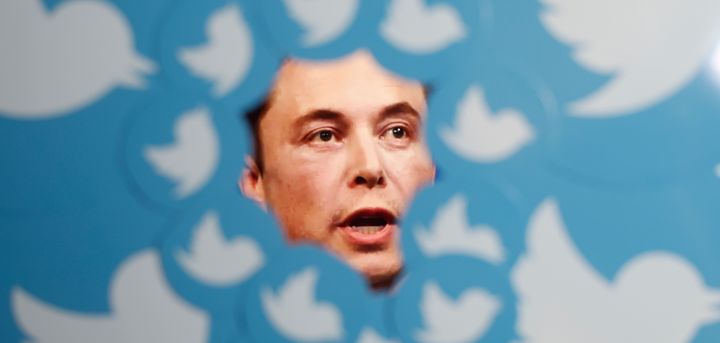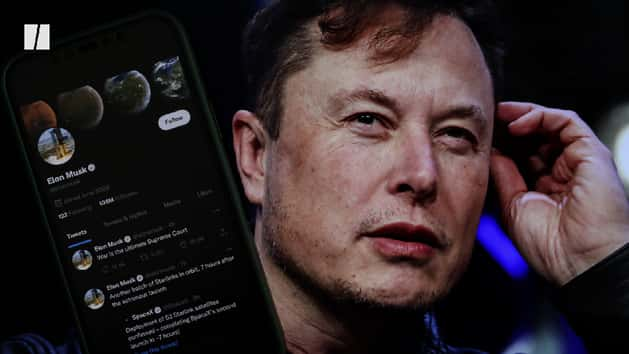Welcome to the new Twitter. Here, everyone can be anyone and for the low, low price of $8 (£7), the company will give you a veneer of legitimacy to back it up ― at least temporarily.
Nearly two weeks into the company’s Elon Musk era, half of the employees have been laid off (prompting a class action lawsuit), large advertisers have paused their spending (leading to a “dire” financial situation), and Twitter’s previous system for verifying that people are who they claim to be has been deliberately demolished.
That means anyone can now set up an account pretending to be anyone else, and pay $8 (£7) for the checkmark that used to signify the account had been verified, but now means nothing.
That’s how “George W. Bush” on Thursday came to tweet, “I miss killing Iraqis 😞” only for “Tony Blair” to respond, “Same tbh.”
The accounts, both fake, were eventually suspended ― but only after they gained widespread attention and more than nine hours after their initial tweets. It’s what advertisers might consider a “free-for-all hellscape.”
Join us for a brief recap of what’s happening at Twitter:
Playing chicken with the FTC
Twitter’s chief privacy officer Damien Kieran, chief information security officer Lea Kissner, and chief compliance officer Marianne Fogarty all resigned this week, according to Platformer reporter Casey Newton.
In their absence, engineers will reportedly be expected to “self-certify compliance with [Federal Trade Commission] requirements and other laws.”
Kissner confirmed their departure on Twitter Thursday.
The departures expose Twitter, and individual employees, to potentially billions of dollars in legal liability, stemming in particular from an agreement the company reached with the FTC in May for misusing private user data to serve ads.
In a note obtained by The Verge, a lawyer on the company’s privacy team sounded the alarm internally and encouraged employees to seek whistleblower protection if they’re asked to do anything they’re uncomfortable with.
“Over the last two weeks, Elon has shown that he cares only about recouping the losses he’s incurring as a result of failing to get out of his binding obligation to buy Twitter,” the letter reads, in part. “He chose to enter into that agreement! All of us are being put through this as a result of choices he made.”
“I have heard Alex Spiro (current head of legal) say that Elon is willing to take on huge amount of risk in relation to this company and its users,” the author wrote, “because ‘Elon puts rockets into space, he’s not afraid of the FTC.’”
Separately Thursday, Yoel Roth, Twitter’s head of Trust & Safety and a leading figure in the fight against hate speech on the platform, was also said to be leaving the company.

Advertisers are flying the coop
Several major ad buyers paused spending on the platform after Musk took over, citing well-founded concerns about how the “free speech absolutist” planned to moderate controversial content.
Twitter hasn’t actually changed its moderation or enforcement policies since the acquisition, but Musk’s own behaviour has corporate America on edge and research shows racial slurs have nevertheless soared.
“Not only are extremists celebrating Musk’s takeover of Twitter, they are seeing it as a new opportunity to post the most abusive, harassing, and racist language and imagery,” a group of advocacy organisations wrote in an open letter to Twitter advertisers last week. “This includes clear threats of violence against people with whom they disagree.”
At an all-hands meeting Thursday he told employees he wasn’t sure how much time Twitter has to turn it around and that “bankruptcy isn’t out of the question.”
Musk first attempted to cajole them back by accusing them of choosing “political ‘correctness’” over “freedom of speech” (a false dichotomy). When that didn’t work, he blamed “activist groups.” And when that didn’t work he suggested lawsuits might follow.
Not helping matters, the company’s ad sales head publicly resigned soon after the acquisition closed.
On Wednesday, the billionaire held an hour-long Q&A on Twitter Spaces seeking to allay advertisers’ fears and paint his vision for a “digital town square that’s as inclusive as possible.”
Monthly subscriptions featured heavily in his pitch, both as a means to decrease spam on the platform and to create a brand-safe environment.
“I don’t think having hate speech next to an ad is great. Obviously,” he told advertisers. But the “propensity for someone to engage in hate speech if they’ve paid $8 and are risking the suspension of their account is going to be far, far less.”
The pep talk didn’t seemingly result in an immediate rush of advertisers back to Twitter. Hours later, Musk sent his first email to the company, warning of a “dire” economic picture given Twitter’s heavy reliance on advertising dollars. In the same email, Musk also reversed Twitter’s work-from-anywhere policy.
Will the real Slim Shady please stand up?
Soon after Musk told advertisers he didn’t believe people would regularly pay $8 for a check mark they’d use to impersonate other verified accounts, a whole bunch of Twitter users proceeded to do just that.
Verified accounts purporting to be former President George W. Bush and British Prime Minister Tony Blair cropped up, followed by countless other fakes of Elon Musk, LeBron James, and others.
To the particular horror of advertisers, fake ― yet still “verified” ― brands also appeared. “Nintendo of America” shared a photo of Mario flipping people off. And the drug manufacturer “Eli Lilly” excitedly announced that “insulin is free now.”
Twitter briefly debuted a gray “official” tag to effectively double-verify accounts, only to have Musk almost immediately kill it.
While Musk told advertisers Twitter “will actively suspend accounts engaged in deception or trickery of any kind,” that’s easier said than done when you’ve fired half your staff and are committing those who remain to an endless game of whack-a-mole.

